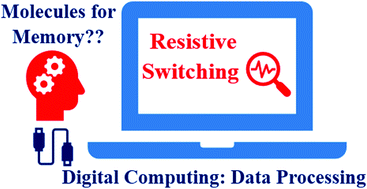Nanoscale molecular layers for memory devices: challenges and opportunities for commercialization
Abstract
The modern era of digital computing systems is deeply embedded around memory devices, which store an ocean of information accessible by an electronic gadget. Such electronic circuitry can be mimicked by molecules that became known to the scientific community over the last two decades. However, their mechanistic studies, fast switching events, reproducibility, and scaling-up approaches are crucial points for such molecular devices to have practical applications. Among the well-explored systems, redox-based resistive switching memories (RRAM) are the most prosperous research domain, expressly for technological augmentation. In situ stabilization of electrical charges on the molecule for the subsequent reduction of the frontier molecular orbital's energy gap, can be an excellent method to overcome the slow switching speed of prototype devices. The recent extension of resistive memory to memristors has also offered enormous charge storage capacity and processing ability to overcome Moore's limitation law and the Von Neumann bottleneck issue. Thereby, the central objective of the present review is to showcase the recent progress in the fabrication of devices incorporating inorganic, organic, and redox-active molecules, either in self-assembled monolayers or many molecules assembled between two electrical contacts followed by stimuli-responsive current–voltage (I–V) analysis. Solid-state molecular memory devices as a ‘proof-of-concept’ might be prolific in future applications.

- This article is part of the themed collection: Journal of Materials Chemistry C Emerging Investigators


 Please wait while we load your content...
Please wait while we load your content...